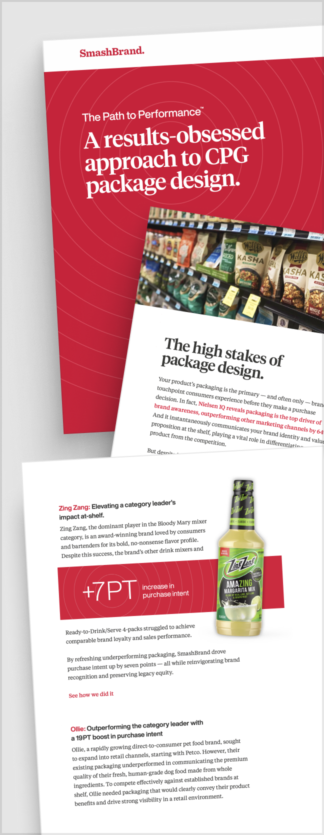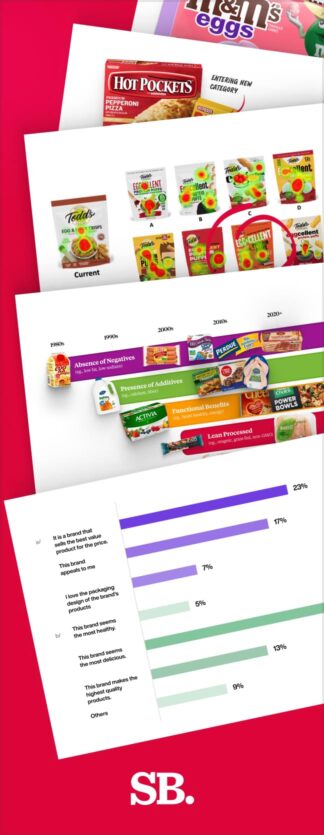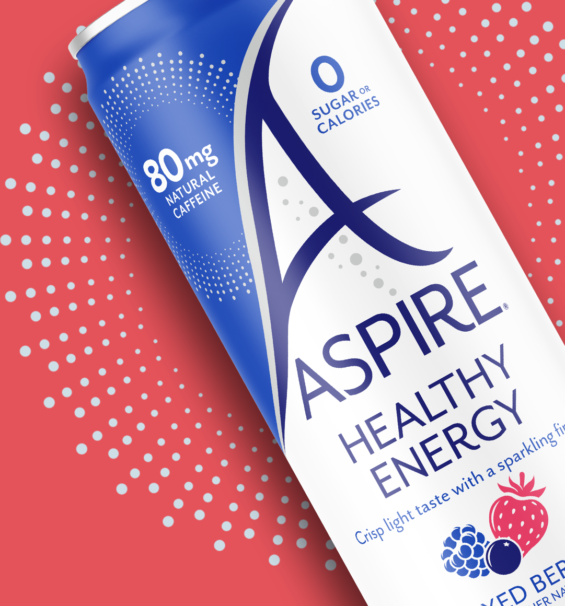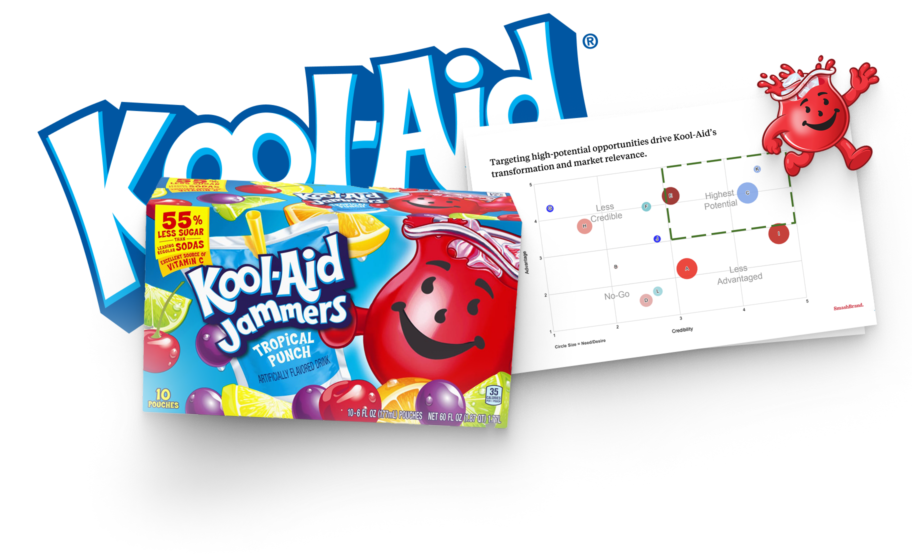A product that looks great in a pitch deck may fall flat on the shelf. This happens with many CPG brands. They spend months polishing strategy to watch execution unravel at the last mile, where it matters. The real problem? Most teams mistake brand guidelines for a brand activation toolkit.
Whether in retail, social media, or experiential marketing, you need more than visual consistency. You need ready-to-deploy assets that build brand awareness, drive trial, and turn interest into brand loyalty. Without that, even the boldest brand activation campaign risks becoming background noise.
This article shows you what a genuine, successful brand activation looks like and, more importantly, how to build the toolkit that powers it. From shelf-ready designs to digital assets, you’ll walk away knowing exactly what belongs in your activation toolbox to win attention, earn trust, and grow your brand.
What a brand activation toolkit is.
A brand activation toolkit is not just a mood board or a logo guideline; It’s a complete set of materials your team needs to launch, promote, and scale a brand in the real world. Think of it as your brand’s action kit: everything required to turn a brand activation strategy into something your customers see, touch, and respond to.
This toolkit includes practical, ready-to-use deliverables like final packaging files, retail display mockups, ecommerce product content, messaging templates, and visuals tailored for product sampling, influencer marketing, or your next activation campaign. Whether planning an in-store push or a digital-first marketing campaign, this toolkit helps you stay on brand while staying fast.
Effective brand activation doesn’t happen by chance. It takes planning, alignment, and a toolkit that’s built to help you engage potential customers, explore bold brand activation ideas, and make every activation effort count.
What a great brand activation toolkit includes.
A great brand activation toolkit is the operational engine behind every successful brand activation campaign. It brings strategy to life, reduces misfires, and helps teams stay consistent across every digital, retail, and beyond touchpoint. When done right, it becomes the backbone of your brand activation efforts, driving brand visibility, customer loyalty, and long-term brand value.
Here’s what a high-performing toolkit includes and why it matters:
Core visuals that scale.
Every successful activation starts with a solid brand foundation. This includes your logo system, typography, color palettes, tone of voice, and usage guidelines. These strategic tools lock in your brand identity and ensure consistency across teams, agencies, retailers, and influencers. Brand recognition takes a hit without scalable brand visuals, and every new campaign risks going off the rails. These assets make it possible to expand while staying rooted in who you are.
Packaging built to win at shelf.
This is where design meets purchase behavior. Packaging files should include final dielines, variant extensions, bundle callouts, and retail-specific adaptations (like club store or DTC packaging). These aren’t static templates—they’re tailored tools designed to grab attention, communicate product benefits quickly, and align with how consumers shop. Excellent packaging creates brand visibility in crowded aisles and helps deliver effective brand activation right at the decision point.
Retail-ready displays.
Shelf talkers, end cap displays, display palettes, and even competitive mockups help bring the physical retail experience to life. These assets allow your brand to appear strong and consistent in any in-store environment, from mass to specialty to convenience. They also let you test and visualize your presence before you hit stores. This part of the toolkit separates a passive presence from an activation campaign that moves product.
Digital that converts.
No activation strategy is complete without digital support. This toolkit includes ecommerce images, Amazon A+ content, mobile-optimized banners, influencer-ready visuals, and social media assets.
These tools ensure your digital presence supports awareness and conversion, whether running product sampling, influencer marketing, or full-funnel digital campaigns. Consumers expect the same quality online as they see in-store, and this section ensures you deliver it.
Templates for fast action.
Sales decks, promo flyers, ad resizes, and internal briefing docs the differences between fast execution and fragmented chaos. Whether running a seasonal promotion or responding to retailer requests, having flexible templates helps keep your brand activation efforts agile, consistent, and aligned with your larger strategy.
Together, these components form the core of an impactful brand activation toolkit, not just theory but also tools built to drive a successful brand activation campaign across every channel. It’s how your brand earns attention, maintains trust, and turns potential customers into lifelong fans.
Where most brand activation toolkits fall short.
Most brand activation toolkits look great on paper but fall apart in practice. The issue usually isn’t the brand itself. It’s how the tools are built and used. Inconsistent execution, siloed teams, and assets that don’t translate across formats are the top culprits. One team’s social graphic doesn’t match the ecommerce thumbnail. The packaging says one thing, and the website says another. And that guerrilla marketing push you just launched? Feels disconnected from the rest of your brand experience.
The biggest disconnect happens between strategy and final packaging. Teams build out big ideas in the marketing strategy phase but never translate them into shopper-ready tools. The result? Poor buyer presentations, weak in-store presence, and lost shopability where it counts most.
When toolkits fail, brand activation campaigns lose steam. You miss key performance indicators, your brand ambassadors struggle to tell a cohesive story, consumer engagement dips, and even digital marketing and high-traffic brand activation examples fail to land. Even the most ambitious marketing efforts can fail to become successful brand activation campaigns without a usable toolkit.
Real-world insight that shapes brand activation toolkits.
Real-world insight is what separates a polished deck from a brand activation that performs. Toolkits aren’t just made in design files—they’re shaped in retail aisles, consumer tests, and messy realities that most traditional marketing decks overlook. Take color clutter at Kroger, for example. In the family category, an overload of blue and white packaging meant one brand had to rethink its product branding strategy to stand out.
In another case, bundle visibility at Walmart was a pain point; what looked bold in renders disappeared when stacked behind glass or placed low on the shelf. When sleeves came off during testing, key claims and logos vanished, revealing weaknesses in the structural packaging design. That’s a deal-breaker in high-traffic retail.
Winning toolkits are built through retail simulation. We’re not just talking about pretty renders—we’re talking shelf set mockups, co-branding overlays, and digital activation layers that mimic what customers see, touch, and scroll past.
These insights also inform digital campaign alignment. A strong toolkit considers how assets perform on social media platforms and in customer-facing spaces, whether a sampling campaign at a brand activation event or an in-store interactive experience. When done right, the toolkit drives customer engagement, reinforces brand sentiment, and seamlessly ties together digital and physical touchpoints under one unified brand activation strategy.
Toolkit vs. brand guidelines.
Brand guidelines and activation toolkits serve different purposes, and confusing the two is one of the most common (and costly) brand-building mistakes. So what’s different? Brand guidelines explain the brand. They define the logo, tone of voice, colors, and dos and don’ts. They’re essential but static.
On the other hand, a brand activation toolkit contains guidelines that explain the brand. It is built to activate the band across channels, platforms, and situations, whether it’s a social media platform, a sampling campaign at a brand activation event, or an in-store setup loaded with interactive elements.
It’s full of execution-ready assets designed to adapt to consumer preferences, trigger engagement, and support everything from traditional advertising to digital-first, interactive experiences. So here’s the truth: if you’re only building guidelines, you’re only halfway there.

Path to Performance™
Taking a results-obsessed approach to CPG package design.
Learn how SmashBrand’s proprietary process – rooted in scientific principles, informed by data, and validated by your target audience – takes the guesswork out of package design and delivers guaranteed results.
The ROI of getting this right
The return on a real brand activation toolkit goes way beyond convenience. It hits the core business metrics that matter in product branding and marketing. Here’s how:
Reduced lag from handoff to execution.
One of the most common mistakes in FMCG branding is the gap between strategy and execution. A toolkit eliminates that lag. With ready-to-deploy assets (messaging, packaging files, and digital layouts), your internal teams and external partners don’t waste time interpreting the brief. This is especially critical when managing naming and branding across multiple SKUs or product lines. A faster handoff means faster launches, fewer bottlenecks, and cleaner channel rollouts.
Better sell-in with retail partners.
Retail buyers aren’t just evaluating your product but your readiness. They want to know: Can this brand move volume? Will it show up strong on the shelf? Does it have the assets for promotion, digital placements, or seasonal displays?
A well-built brand activation toolkit answers those questions before they’re asked. It includes:
- Retailer-specific packaging mockups that reflect real shelf conditions
- Bundle configurations with clear value callouts
- Promotional visuals tailored to retailer platforms (end caps, print circulars, ecommerce placements)
- Proof of alignment between your product branding strategy and retail execution
This shows that your marketing isn’t theoretical—it’s channel-aware and performance-driven. It gives retailers the confidence to say yes faster, prioritize their brand in-store, and support their activation efforts with better placement and visibility. In tight buyer meetings, that kind of preparation is a competitive edge.
More consistent consumer experiences.
Consistency builds trust, which drives repeat purchases. A proper brand activation toolkit ensures that every brand touchpoint, whether a shelf display, a sampling campaign, or a digital ad, delivers a unified look, feel, and message.
Without it, inconsistencies creep in. The ecommerce listing uses outdated images. The retailer promo misuses the logo. The social media post pushes a different call-to-action than what’s on the pack. These gaps confuse consumers and erode brand credibility.
When your toolkit includes pre-approved messaging, visuals, and templates tailored for each platform, it ensures your product branding and marketing efforts feel seamless. That cohesion leads to stronger brand recall, easier decision-making at the shelf, and better alignment with consumer expectations.
In fast-moving categories where attention is short and alternatives are everywhere, consistent brand experiences are essential for building preference and loyalty.
Faster, measurable lift in purchase intent and shelf velocity.
A fully built brand activation toolkit allows your team to launch assets aligned with what drives consumer action—messaging hierarchy tested through consumer research, packaging optimized for shopability, and in-store materials built for visibility in competitive categories.
When shoppers encounter a consistent, clear message across shelf displays, digital ads, and social media, friction in purchasing is reduced. That consistency improves recognition, trust, and, most importantly, conversion.
In practical terms, this leads to:
- Higher click-through and conversion rates on ecommerce platforms
- Increased off-shelf pickup and unplanned purchases at retail
- Faster movement of new SKUs or bundle formats
- Cleaner activation reporting tied to purchase intent metrics
And because the toolkit eliminates delays and guesswork in activation, you hit the market faster and start measuring impact sooner. Timing can make or break category performance for brands with short shelf cycles and rapid inventory turns.
This is the real win. A complete toolkit means your brand can show up stronger, faster, and more effectively across activation channels—resulting in higher purchase intent, better shopper conversion, and ultimately, speedier shelf movement. For FMCG brands, that’s the metric that defines success.
In short, the ROI of a brand activation toolkit depends on speed, clarity, consistency, and sales. Skipping it is one of the most avoidable branding mistakes.

Nice Package
Don’t miss out on our monthly newsletter Nice Package!
Each month, we deliver a data-driven newsletter directly to your inbox, unpacking a critical topic in the FMCG & CPG industry.
"*" indicates required fields
Data-driven brand activation toolkit.
At SmashBrand, we build brand activation toolkits and engineer them through consumer insight, testing, and real-world validation.
Every asset we develop, whether it is packaging, a pitch deck, or a retail display, is informed by data. That means we don’t guess what will perform on the shelf or in a digital campaign. We test it. We measure purchase intent, visual stopping power, and competitive impact through performance packaging design tests before a single unit hits production.
Our process blends brand style guides with functional execution tools, ensuring that everything from in-store signage to ecommerce assets drives results. We also offer pre-production services that align every deliverable with what your consumers respond to and your retail partners expect.
If you’re not sure what your brand needs on the shelf, on the ecommerce sites, or in pitch decks, we can help. Let’s talk about building your toolkit the right way.
Subscribe to
Nice Package.
A monthly newsletter that unpacks a critical topic in the FMCG & CPG industry.
Free Resource.

CPG product repositioning guide.
Explore the five undeniable signs your CPG product needs repositioning along with strategies for leveraging consumer insights for a guaranteed market lift.
Learn More About CPG product repositioning guide.


